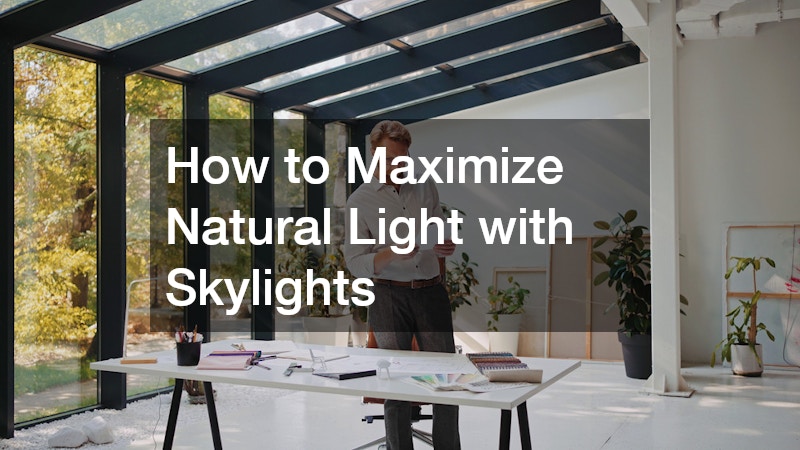
Natural light has a profound effect on our well-being and the overall ambiance of a space. One of the most effective ways to harness this valuable resource is through the installation of skylights. Skylights not only brighten up rooms but can also enhance the aesthetic appeal of your home, increase energy efficiency, and improve your indoor air quality.
Video Source
This article will explore how to maximize natural light with skylights, diving into the strategic placement, types, and benefits of skylights in your living spaces.
Skylights are a popular choice for homeowners looking to brighten up their surroundings. One of the primary advantages of installing skylights is their ability to increase the amounts of natural light that enter a space. Studies have shown that natural light can enhance mood, boost productivity, and even improve sleep quality. This makes the placement of skylights in areas where people spend significant time invaluable. Moreover, they can also help reduce reliance on artificial lighting, leading to lower energy bills.
Beyond illuminating a room, skylights can also help regulate indoor temperatures. During cold weather, natural sunlight pouring through a skylight can warm a space, reducing the need for heating. Conversely, in warmer climates, strategically designed skylights can facilitate airflow and improve ventilation, keeping indoor spaces cooler. Additionally, modern skylights often come with energy-efficient glazing options that minimize heat loss during winter months or heat gain during the summer. Thus, using skylights smartly can be an energy-efficient tactic.
When considering skylights, it's essential to look at the different types available. There are fixed skylights that provide illumination without ventilation and venting units that allow for airflow. Tubular skylights, which are ideal for smaller spaces, can also channel light into areas that traditional skylights cannot reach. Selecting the appropriate type depends largely on the function of the room and your specific lighting needs. For example, a kitchen or bathroom might benefit from a venting skylight to improve air circulation.
Size is another critical factor in maximizing natural light with skylights. Larger skylights, while more expensive, can significantly increase the volume of light in a downcast room. However, installing a massive skylight without proper consideration could lead to overheating in the summer or excessive heat loss in the winter. Balancing size with the room's purpose and climate will help ensure that your skylight optimally enhances your space. Additionally, experimenting with multiple smaller skylights can sometimes produce a more balanced and distributed light effect.
Once you’ve selected the right skylights for your space, the next step is the installation process. Hiring a qualified contractor is highly recommended, as improper installation can lead to leaks and energy inefficiencies. A professional can properly frame the skylight and ensure that it is well-sealed to prevent potential water damage and heat loss. Involving an expert will also help meet local building codes and weather requirements necessary for your region. This will give you peace of mind regarding the safety and durability of your installation.
Maintenance is another crucial aspect of skylights that homeowners should not overlook. Regular cleaning of the skylights will help maintain their clarity and efficiency. Dust, debris, and bird droppings can obscure light, diminishing the effectiveness of your skylight. Along with outdoor cleaning, regular inspections for leaks, damage, or condensation buildup are equally important. Simple upkeep can extend the lifespan of your skylights and ensure they continue to illuminate your space effectively.
Finally, staying informed about advancements in skylight technology can lead to significantly improved performance and energy efficiency. Modern skylights now boast various features like insulated glass, built-in shading systems, and solar-powered ventilation. Keeping an eye on these developments can enhance your skylight's functionality and comfort. As energy efficiency becomes more critical, investing in these innovations might yield long-term savings and improve the comfort of your living space. By adopting these considerations, you can truly maximize the benefits of skylights.
Incorporating skylights in your home is a powerful way to harness natural light while promoting a healthier living environment. With various types, sizes, and designs available, there is a skylight for every unique need. By understanding the benefits, choosing the right product, and ensuring proper installation and maintenance, you can significantly enhance the light quality and overall aesthetic of your space. Skylights represent not just a way to improve illumination; they are an investment in beauty, comfort, and energy efficiency that pays off in the long run. So, elevate your home with skylights — it’s time to bring the outside in.
.